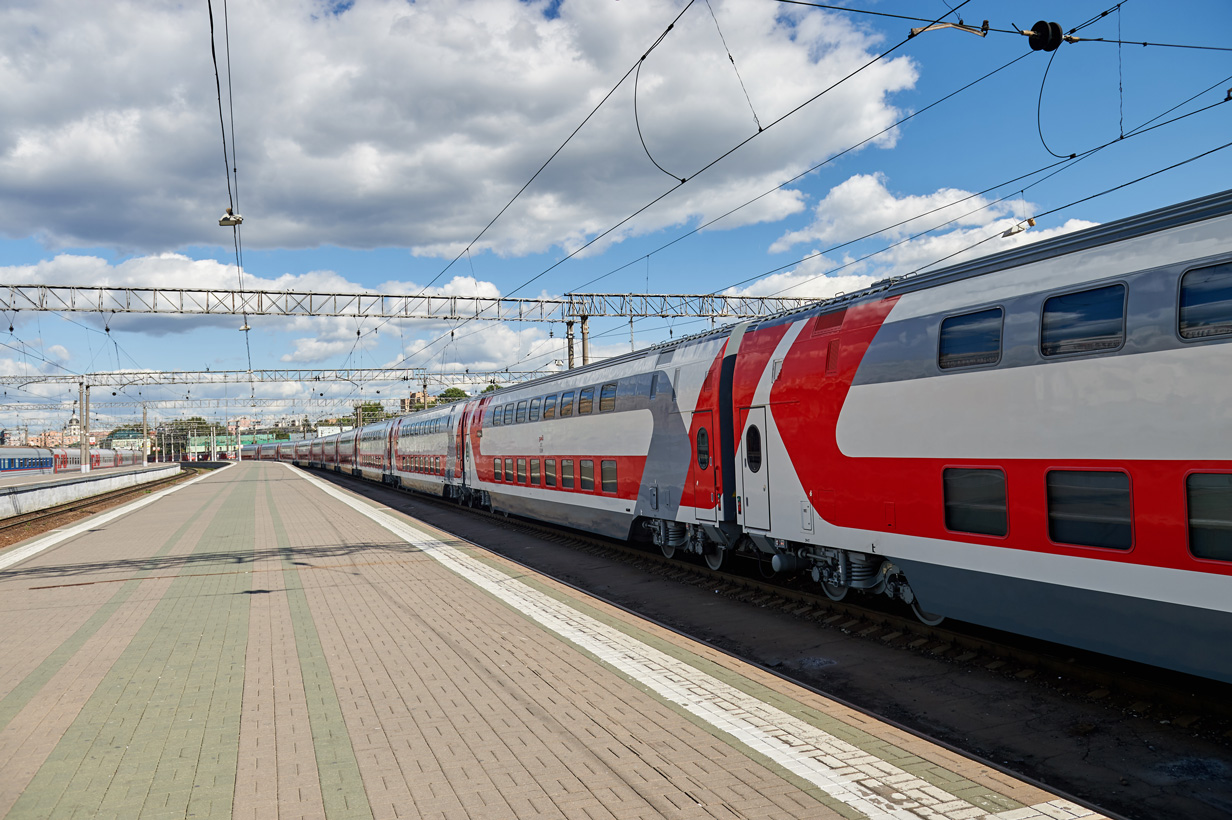



Capital expenditures provided for in FPC’s investment programme totalled RUB 17.8 billion in 2015.
In the reporting period, the Company purchased 185 new passenger carriages for RUB 12.6 billion, including:
RUB 3.9 billion was spent on the rolling stock upgrades.
The remaining capex totalling RUB 1.3 billion, or 7.6%, was used to support depot upgrades, IT projects, and other initiatives.
The new rolling stock was purchased to upgrade the fleet and replace retiring carriages.
In 2015, the Company purchased 80 TALGO carriages (worth RUB 4.4 billion) to run passenger services between Moscow and Nizhny Novgorod.
Additionally, FPC purchased 70 double‐decker carriages (worth RUB 5.4 billion), including 16 double‐deckers for interregional services (worth RUB 1.2 billion). The new rolling stock is used on busy profitable routes, namely Moscow – Samara, Moscow – Voronezh and Moscow – Saint Petersburg. The double‐deckers improved the Company’s competitiveness by reducing transportation costs.
With government subsidies shrinking in 2015, the Company acquired only 25 third‐class carriages (worth a total of RUB 0.8 billion) and 16 double‐deckers for interregional passenger services (worth a total of RUB 1.2 billion).
FPC is keen to maintain its fleet of third‐class carriages for the following reasons:
In 2015, Tver Carriage Works completed a contract awarded by RZD in 2011 for 200 RIC carriages. The last 10 carriages worth RUB 2 billion were delivered to FPC in February 2015. The RIC carriages are intended to be used in international passenger services.
As part of its 2015 Investment Programme, the Company financed a RUB 3.9 billion Passenger Rolling Stock Upgrade project. Most funds (RUB 3.1 billion, or 81%) were used to perform carriage overhauls with service life extension.
In addition, the Investment Programme provided for depot upgrade projects and IT projects.
RUB 0.8 billion was spent on depot upgrades.
| Item | 2014 | 2015 | +/– |
|---|---|---|---|
| Rolling stock acquisition | 21,1 | 12,6 | –8,5 |
| Rolling stock upgrades | 0,9 | 3,9 | 3,0 |
| Depot upgrades | 1,8 | 0,8 | –1,0 |
| IT projects | 0,5 | 0,4 | –0,1 |
| Other projects | 0,2 | 0,1 | –0,1 |
| Total | 24,5 | 17,8 | –6,7 |
Investments in depots were used primarily to:
RUB 0.4 billion was spent on IT projects in 2015. A priority IT project for FPC was the development of ticket sales, with investments totalling RUB 0.2 billion; RUB 0.1 billion was spent on the route network optimisation.
Investments in other projects totalled RUB 0.1 billion.
Sources of financing for the 2015 Investment Programme were:
The key reason for year‐on‐year change in the size of capital investments was a smaller number of passenger carriages purchased in 2015 (185 vs. 274 in 2014), with a difference of 89 passenger carriages worth (RUB 8.5 billion).
By contrast, a 4.3‐fold increase over 2014 in rolling stock upgrade costs was associated with the need to maintain the required performance levels of the Company’s railcar fleet.